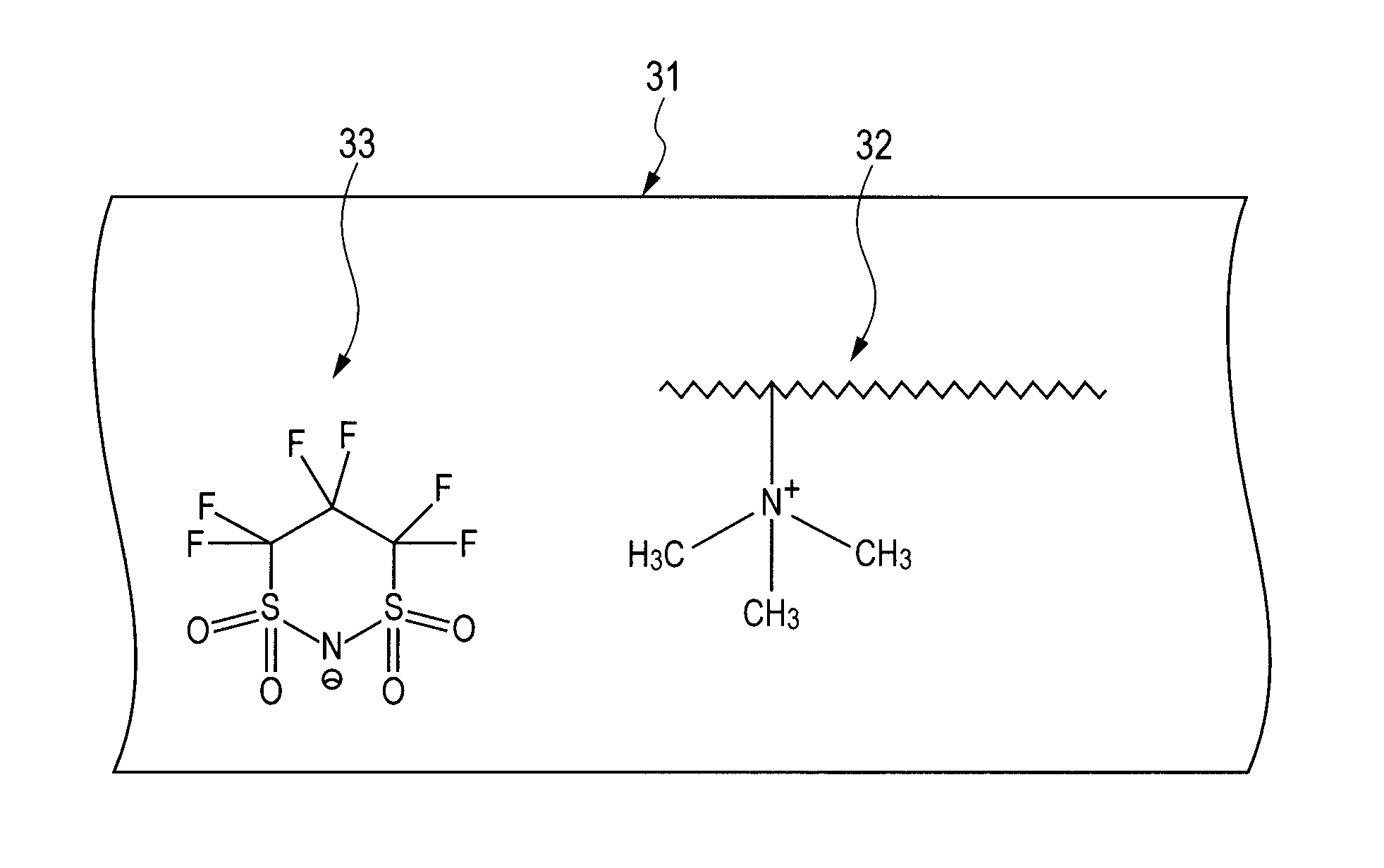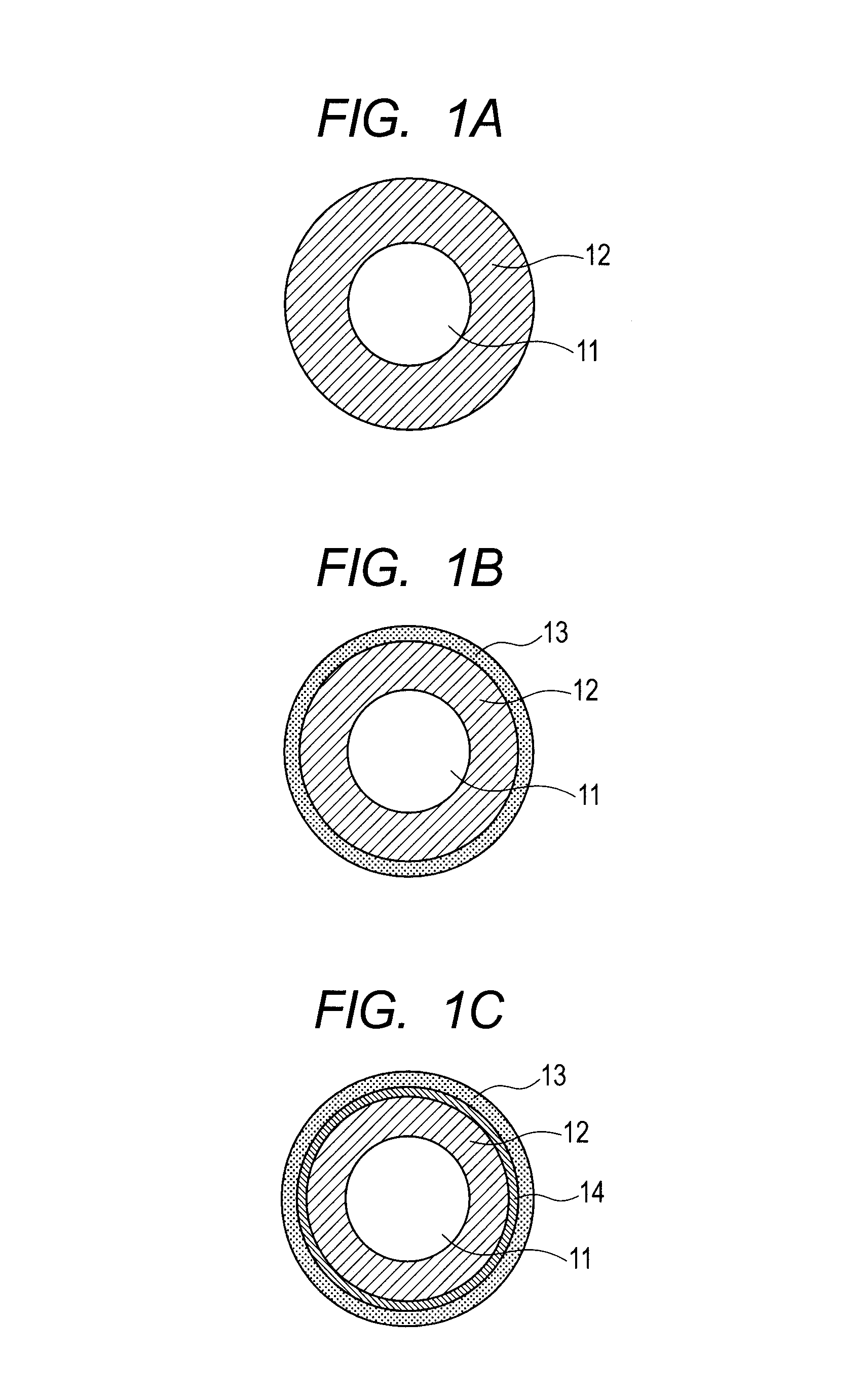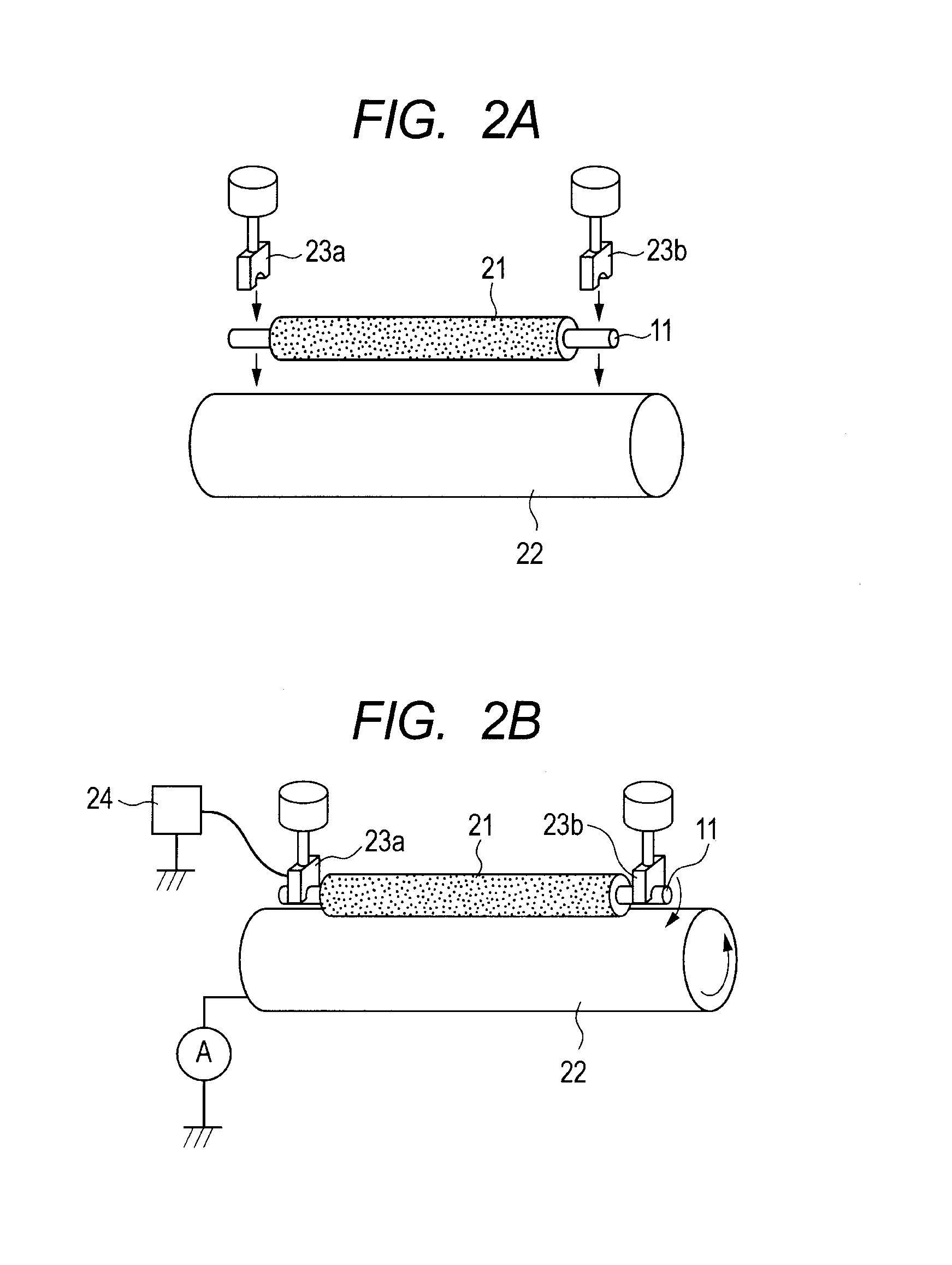Electrophotographic electrically conductive member
a technology of electrical conductivity and electrophotography, which is applied in the direction of corona discharge, shaft and bearing, thin material processing, etc., can solve the problems of white or black blotches, the increase of the number of electrophotographic images to be output, and the unevenness of the density produced in an electrophotographic image stripped. , to achieve the effect of suppressing the unevenness of electric resistance, increasing the number of electrophotographic images to be output, and increasing the local unevenness of the electric resistan
- Summary
- Abstract
- Description
- Claims
- Application Information
AI Technical Summary
Benefits of technology
Problems solved by technology
Method used
Image
Examples
example 1
Production of Charging Roller No. 1
[0099]The elastic roller No. 1 was dipped once in the coating solution No. 1 prepared above to form a coating film of the coating solution No. 1 on the surface of the elastic layer. The time for dipping coating was 9 seconds, and a dipping coating pulling rate was adjusted such that an initial rate was 20 mm / sec and the final rate was 2 mm / sec. The rate was linearly changed with time between 20 mm / sec and 2 mm / sec.
[0100]Subsequently, the elastic roller 1 having the coating film formed on the surface thereof was left as it was in an environment at a temperature of 25° C. for 30 minutes. Next, the elastic roller 1 was placed for 1 hour in a hot air circulating dryer set at a temperature of 90° C. Further, the elastic roller 1 was placed for 1 hour in the hot air circulating dryer set at a temperature of 160° C. to react the coating film. Thus, a surface layer as the electrically conductive layer was formed on the elastic layer. Thus, the charging rol...
examples 2 to 42
[0114]Charging rollers Nos. 2 to 42 were produced in the same manner as in the charging roller No. 1 except that coating solutions having a number shown in Table 10 were used for formation of the electrically conductive layer as the surface layer. These charging rollers were evaluated in the same manner as in the charging roller No. 1.
[0115]
TABLE 10Evaluation 1Environ-mentalVolume resistivityfluctuationEvaluation of imageN / NL / Ldigit ofEvaluationEvaluationCoatingEnviron-Environ-volumeEvaluationEvaluation45Examplesolution No.mentmentresistivity23(kV)(%)111.1E+073.4E+081.49AC1.4498228.1E+061.9E+081.37AC1.4598336.3E+062.5E+070.61AA1.4698444.1E+062.4E+070.76AB1.5398558.6E+063.9E+070.65AA1.4898665.5E+062.1E+070.58AA1.5298774.6E+061.8E+070.59BA1.5798886.6E+062.9E+070.65AA1.4599998.4E+063.2E+080.58AA1.419810108.1E+062.6E+070.51AA1.399911115.9E+063.2E+070.74AA1.488312125.5E+064.1E+070.87AB1.596413137.0E+064.5E+070.81AB1.576614146.1E+063.2E+070.72AA1.468915157.1E+064.0E+070.74AB1.558716166.8E...
examples 43 to 53
[0116]Charging rollers Nos. 43 to 53 were produced in the same manner as in charging roller No. 1 except that the elastic roller No. 1 was replaced by the elastic roller No. 2 and the surface layer was formed using coating solutions having a number shown in Table 11, and were subjected to Evaluation 1 to Evaluation 5. The results are also shown in Table 11.
[0117]
TABLE 11Evaluation 1Environ-Volume resistivitymental(Ω· cm)fluctuationEvaluation of imageCoatingN / NL / Ldigit ofEvaluationEvaluationsolutionEnviron-Environ- volumeEvaluationEvaluation45ExampleNo.mentmentresistivity23(kV)(%)4312.9E+078.5E+081.46AC1.45994432.2E+074.4E+070.30AB1.52994541.7E+074.1E+070.38AB1.589946102.5E+074.6E+070.27AB1.379947142.4E+075.3E+070.35AB1.439148152.4E+075.7E+070.37AB1.58749224.6E+071.7E+091.57AC1.419950232.9E+077.4E+070.40AB1.389951253.3E+077.6E+070.36AB1.339952293.1E+078.1E+070.42AB1.49053303.2E+079.0E+070.45AB1.5289
PUM
 Login to View More
Login to View More Abstract
Description
Claims
Application Information
 Login to View More
Login to View More - R&D
- Intellectual Property
- Life Sciences
- Materials
- Tech Scout
- Unparalleled Data Quality
- Higher Quality Content
- 60% Fewer Hallucinations
Browse by: Latest US Patents, China's latest patents, Technical Efficacy Thesaurus, Application Domain, Technology Topic, Popular Technical Reports.
© 2025 PatSnap. All rights reserved.Legal|Privacy policy|Modern Slavery Act Transparency Statement|Sitemap|About US| Contact US: help@patsnap.com



